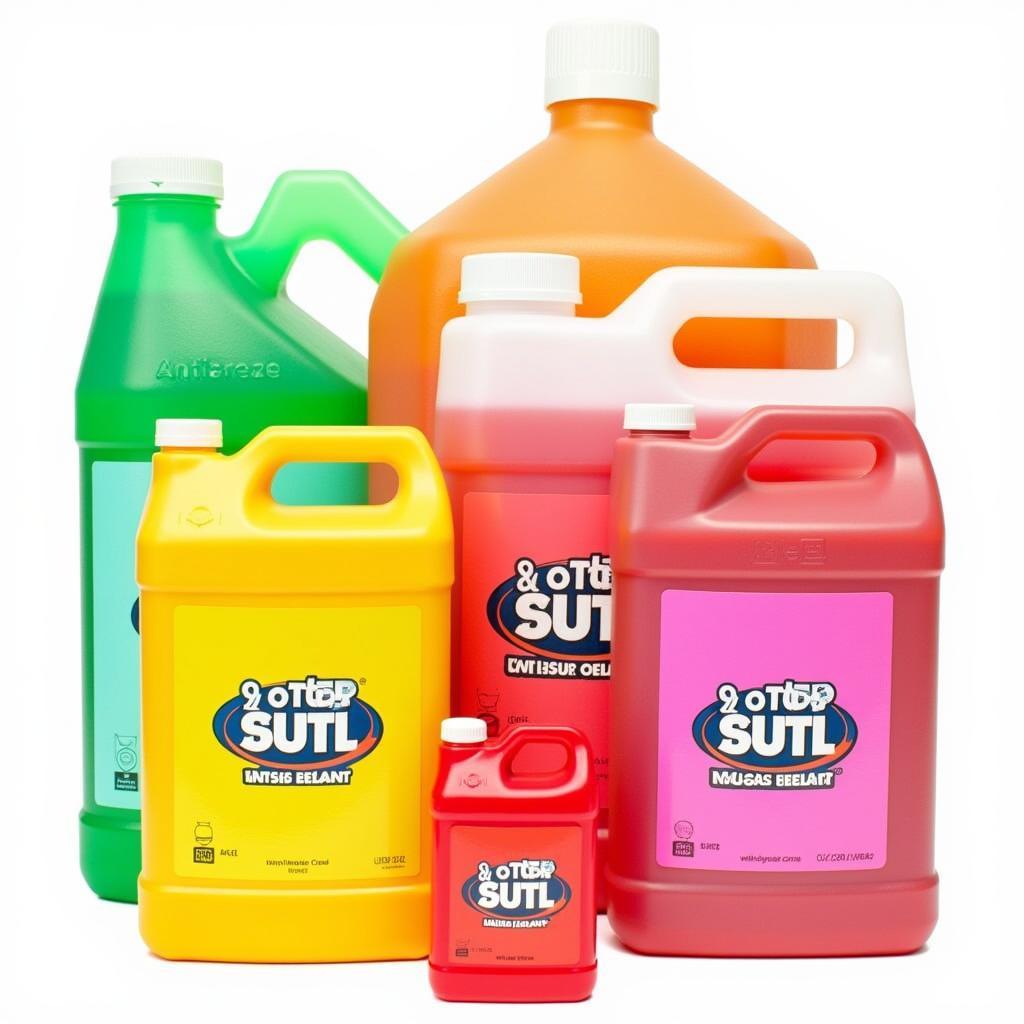Antifreeze coolant, the essential fluid that keeps your car’s engine from overheating, comes in a surprising array of colors. Understanding What Color Is Antifreeze Coolant and what each color signifies is crucial for proper vehicle maintenance. While the color itself doesn’t directly indicate the coolant’s performance, it can provide clues about its chemical composition and intended use. Choosing the right coolant is vital for optimal engine health and longevity.
Decoding the Rainbow of Antifreeze Colors
The vibrant hues of antifreeze might seem purely aesthetic, but they actually serve a practical purpose. Manufacturers use dyes to differentiate coolant types, making it easier for consumers and mechanics to identify the appropriate fluid for their vehicles. However, the color coding isn’t universally standardized, so it’s important to go beyond the color and understand the underlying chemistry.
Green Antifreeze: The Traditional Choice
Traditionally, green antifreeze has been the most common type, formulated with Inorganic Additive Technology (IAT). This type typically contains silicates and phosphates, offering good protection against rust and corrosion. Green coolant generally has a shorter lifespan compared to newer formulations and requires replacement every 2 years or 30,000 miles.
What color is the antifreeze in older cars? It’s usually green.
Orange Antifreeze: Extended Life Protection
Orange antifreeze often signifies an Organic Acid Technology (OAT) coolant. These formulas typically offer extended life protection, lasting up to 5 years or 150,000 miles. OAT coolants provide excellent corrosion protection, especially for aluminum components common in modern engines.
Is orange antifreeze better than green? It depends on the specific vehicle and its manufacturer’s recommendations. Orange coolant is often preferred in newer vehicles.
Yellow Antifreeze: Another OAT Variation
Yellow antifreeze, like orange, often represents an OAT coolant. The different color may simply be a manufacturer’s branding choice or indicate a slightly different chemical composition within the OAT category. Always consult your vehicle’s owner’s manual for the correct coolant type.
What color is peak antifreeze? Peak offers various coolant colors, including traditional green, as well as specialized formulas.
Red and Pink Antifreeze: Hybrid Options
Red and pink antifreeze can signify either OAT or Hybrid Organic Acid Technology (HOAT) coolants. HOAT coolants combine the benefits of both IAT and OAT formulas, offering robust protection and extended life. These colors can be confusing, so careful checking of the product specifications is essential.
Can you mix different color antifreeze? Mixing different coolant types is generally not recommended, as it can compromise the effectiveness of the additives and potentially damage the cooling system.
 Different Colors of Antifreeze Coolant Bottles
Different Colors of Antifreeze Coolant Bottles
Blue and Purple Antifreeze: European Formulations
Blue and purple antifreeze are more commonly found in European vehicles. They often represent OAT or HOAT formulations, but again, the specific chemical composition can vary.
Is it bad to mix coolant colors? Yes, especially if the chemistries are incompatible. Mixing different types can lead to gel formation, reduced heat transfer, and corrosion.
Why Choosing the Right Antifreeze Matters
Using the correct antifreeze is critical for protecting your engine from damage. The wrong coolant can lead to corrosion, overheating, and costly repairs. Always consult your vehicle’s owner’s manual to determine the recommended coolant type and color.
FAQs: Addressing Common Coolant Questions
-
What happens if I use the wrong color antifreeze? Using the wrong coolant can lead to corrosion, overheating, and reduced engine life.
-
How often should I change my antifreeze? Consult your owner’s manual for the recommended interval, but generally every 2-5 years depending on the coolant type.
-
Can I just add water to my coolant? While adding water in an emergency is acceptable, it dilutes the coolant and reduces its effectiveness. Always replace with the correct coolant type as soon as possible.
-
What color should motor oil be? Motor oil color can vary depending on its age and condition, but it’s typically amber, brown, or black. For more information you can consult what color should motor oil be.
-
How do I check my coolant level? Locate the coolant reservoir and check the level markings. Ensure the level is within the recommended range.
-
What is the difference between antifreeze and coolant? Antifreeze is a concentrated solution that needs to be mixed with water to create coolant.
-
Where can I buy the right antifreeze for my car? Auto parts stores, dealerships, and online retailers typically carry a wide range of antifreeze types.
Conclusion: The Colorful World of Engine Protection
Understanding what color is antifreeze coolant and its corresponding chemistry is essential for proper vehicle maintenance. While color can be a helpful starting point, always refer to your owner’s manual for the manufacturer’s recommendation. Choosing the right antifreeze is a simple yet crucial step in protecting your engine and ensuring its longevity. Remember to check what color is the antifreeze for a quick reference guide.
For further insights, explore topics like can you mix different color antifreeze and is it bad to mix coolant colors.
Need expert advice? Contact us at 0373298888, email [email protected], or visit us at 86 Cau Giay, Hanoi. Our 24/7 customer service team is ready to assist you.

